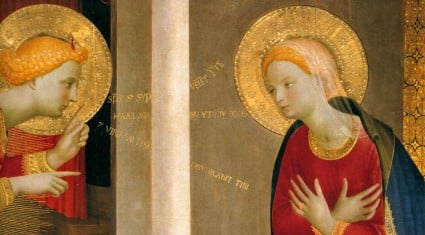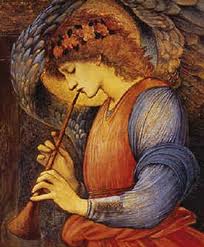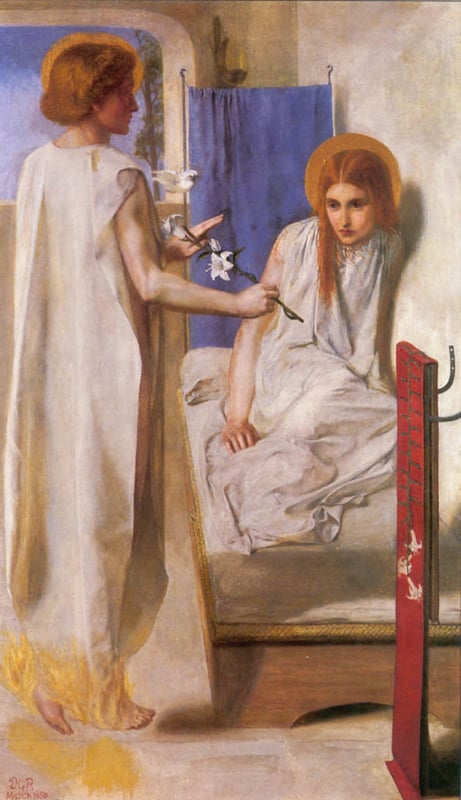 It’s Advent, and the same old lies about Mary are slipping over pulpits and out of parish letters, Christmas cards, public prayers, TV holiday movies, and late night comics’ jokes.
It’s Advent, and the same old lies about Mary are slipping over pulpits and out of parish letters, Christmas cards, public prayers, TV holiday movies, and late night comics’ jokes.
The subjugation of Mary, the maligning of her as meek, mild, and mindless, has been harmful to millions of women over many centuries.
of women over many centuries.
Hiding within the wonder of Christmas are a thousand years of doctrinal female subjugation, doctrines that, like tinsel, are dripped all over the season of Christmas. In the midst of the celebration of Wonderful Life, these malicious ideas keep women from feeling empowered, invited to be strong, and urged by God to imagine new ways t live, as Mary of Nazareth did, who mothered God’s redemption of the human world.
Luke’s is the only gospel in which Mary’s story appears, and in his account there is nothing submissive nor immature about her. According to Luke, the Angel approached her with words of great honor: Hail Mary, full of grace. Many artists paint the angel kneeling, in recognition of the honor given to her. The angel is explicit; the honor is for the grace that is distinctly hers. This is a courtship scene. the angel is wooing her, on bended knee, a suitor – not a constable bringing a decree.
It is Mary’s grace that has attracted God’s attention. And what is this grace? It is what Luke shows us in her conversation and her actions – courage, boldness, grit, ringing convictions about justice. Not submissive meekness. Grace is not submission. And the power of God is never meek.
Yes, she is startled by the presence of the angel. So were Gideon, Jacob, Jonah, and the shepherds of Bethlehem, to name a few, they who, like Mary, questioned the angel in wonder, doubt, and even resistance. They are noted for their reluctance. Why not she? What sort of greeting is this? she asked. And the angel obliged her with an explanation. Later, she challenged the angel: How shall this happen to me, when I have no husband? God chose a spunky woman.
 Many women in biblical stories appear in domestic settings. Sarah is in her tent, baking cakes. Rachel is drawing water at the well. Bathsheba is taking a bath. Martha is fussing around in the kitchen. The woman who lost a coin is sweeping the house. But with Mary, there is no evidence of any domestic work on her part. We never find her cooking, cleaning, washing up. The evidence offered us is her love of adventure. What we find her doing, over and over, is traveling, in journeys that involve risks and an element of danger.
Many women in biblical stories appear in domestic settings. Sarah is in her tent, baking cakes. Rachel is drawing water at the well. Bathsheba is taking a bath. Martha is fussing around in the kitchen. The woman who lost a coin is sweeping the house. But with Mary, there is no evidence of any domestic work on her part. We never find her cooking, cleaning, washing up. The evidence offered us is her love of adventure. What we find her doing, over and over, is traveling, in journeys that involve risks and an element of danger.
Her recitation of the Magnificat is a political manifesto, delivered fairly publicly, in the home of an official temple priest, who is married to her cousin Elizabeth, who is also pregnant, with John the Baptist. In Mary’s manifesto there is evidence of deep thought, strong conviction, and a good deal of political savvy.
None of this gibes with the idea that she is a young teenage girl. The Greek word Luke uses for virgin is an unusual one, a very specific word that means she has not yet born a child. Its precise meaning does not indicate sexual innocence. So let’s be clear: the focus is on her uterus. The state of her hymen is not at issue here.
Luke does not assign her a specific age. And to insist she is under sixteen is to ascribe to God a pedophilic attraction to underage women. Such details twist Mary’s story and burden Christian women with a sense of selfishness if they postpone childbearing, a psychic demand to put childbearing first in their hearts, for God who seems to want nothing from them but pregnancy.
Mary is unmarried when the angel comes. The angel’s invitation and her independent decision tell us Mary does not need permission of clergy – or her parents – to become pregnant. God knows Mary owns her own body. And there is no shame in her decision. Mary is good news for unwed mothers everywhere.
Mary, wanted by God, according to the angel, for her bold, independent, adventuresome spirit, decides to bear a holy child – for a bold agenda: to bring the mighty down from their thrones; to scatter the proud in the imagination of their hearts, to fill the hungry with good things and send the rich empty away. This is Mary: well-spoken, wise, gritty.
 Traveling alone, like every prophet before her, she sets out on her first journey, to her cousin Elizabeth’s house, to declare her agenda. There will be more journeys: to Bethlehem; to Egypt and back; to Jerusalem when Jesus is twelve; to Jerusalem when he is crucified.
Traveling alone, like every prophet before her, she sets out on her first journey, to her cousin Elizabeth’s house, to declare her agenda. There will be more journeys: to Bethlehem; to Egypt and back; to Jerusalem when Jesus is twelve; to Jerusalem when he is crucified.
She gives birth in a barn, lies down animals, and welcomes weathered shepherds in the middle of the night. She is determined, not domestic; free, not foolish; holy, not helpless; strong, not submissive. She beckons women everywhere to speak out for God’s justice, which is waiting to be born into this world.
We are all called to be mothers of God – for God is always waiting to be born. – Meister Eckart, 13th c. German mystic.
_________________________________________________________________________________________
Illustrations:
1. Annuciation. by Fra Angelico. Detail. Vanderbilt Divinity School Library, Art in the Christian Tradition.
2. Annunciation, by Dante Gabriel Rosetti. Vanderbilt Divinity school Library, Art in the Christian Tradition.
3. Angel, by Edward Burne-Jones. Vanderbilt Divinity school Library, Art in the Christian Tradition.
4. Nativity, by Brian Kershisnik. Utah Museum of Fine Arts. Note: The stable is crowded with sheep/angels, who surround Mary and her child.
5. Nativity, by Taddeo Gaddi, 1325, Florence, Italy. Vanderbilt Divinity School Library, Art in the Christian Tradition.










